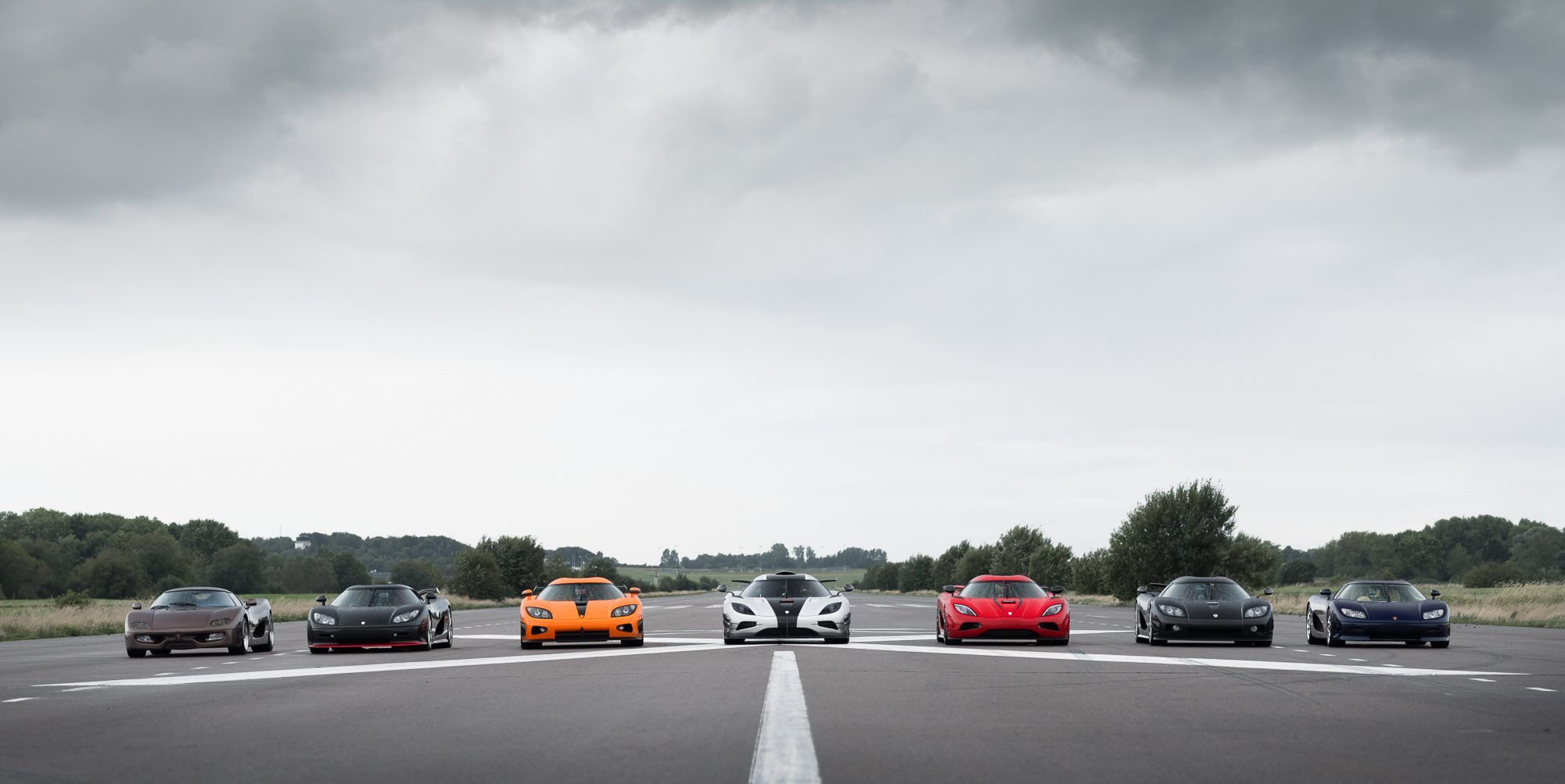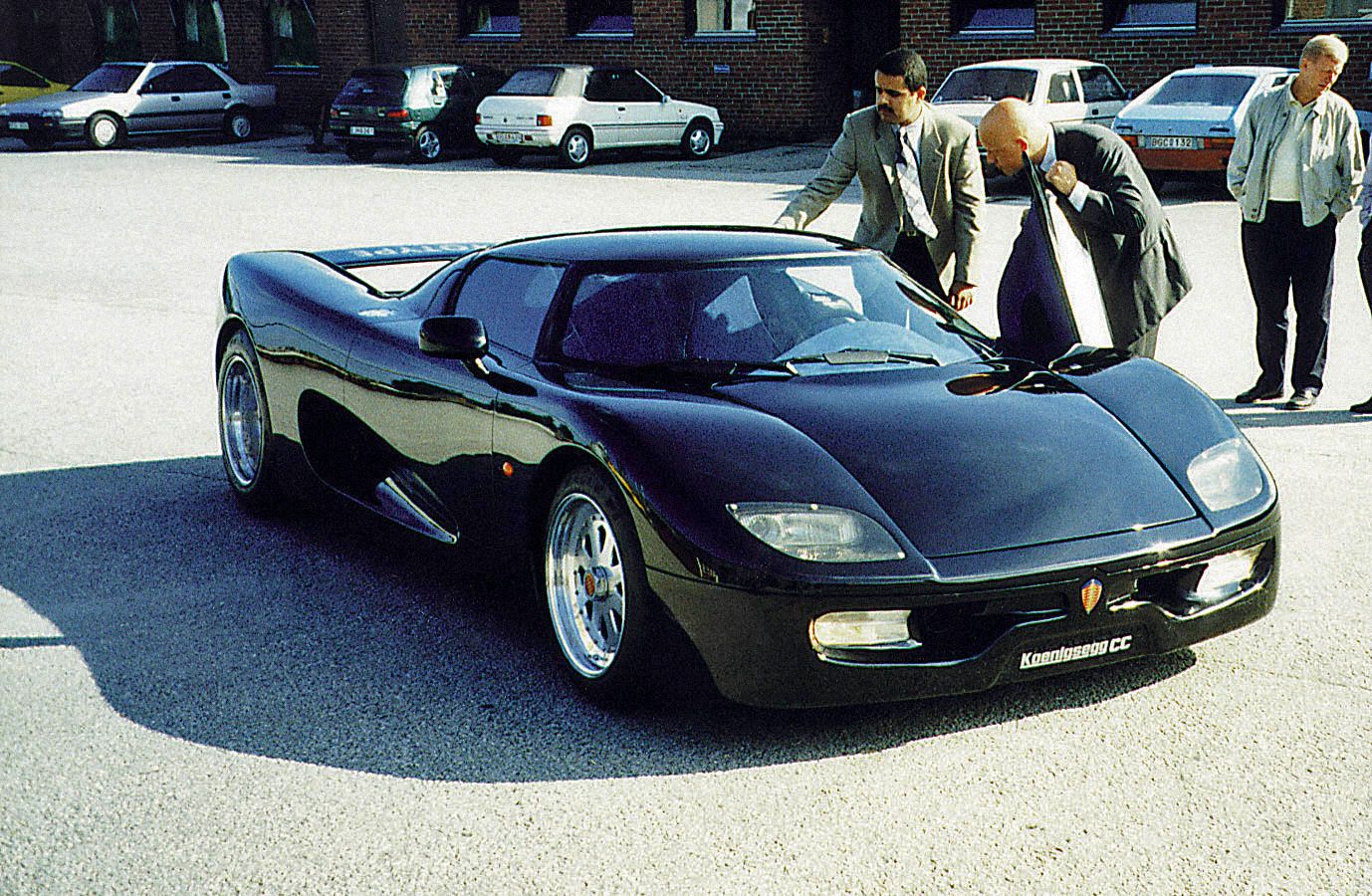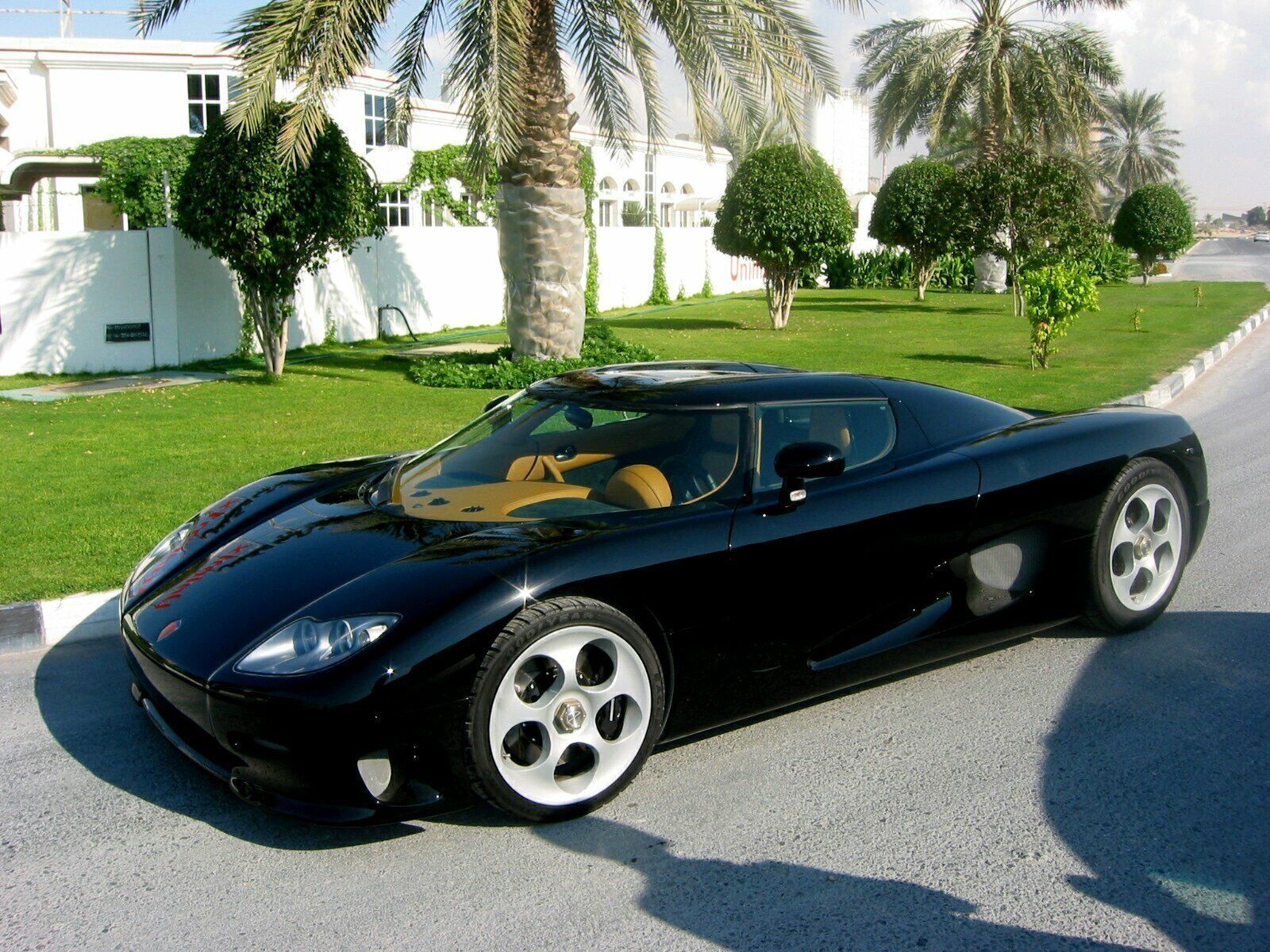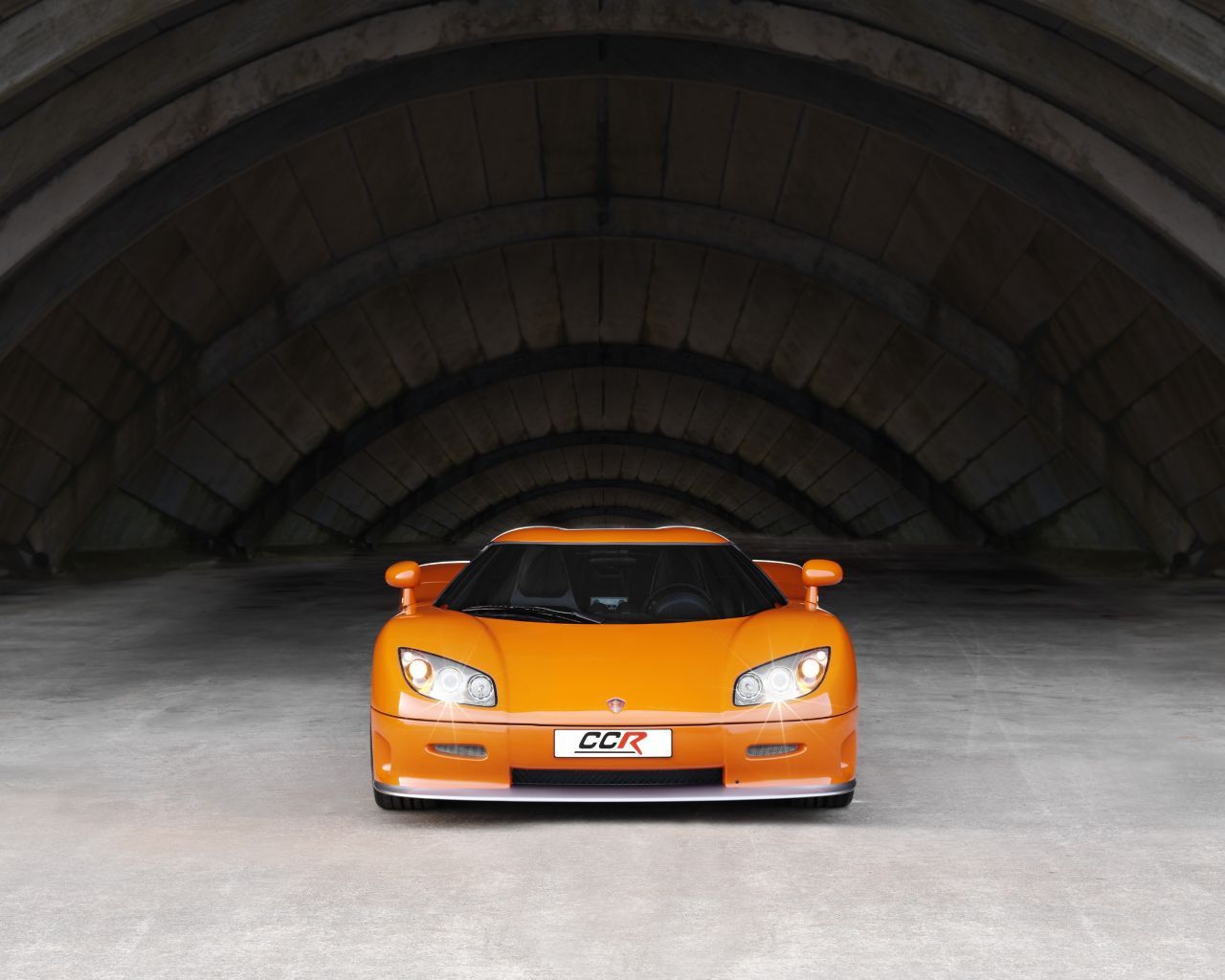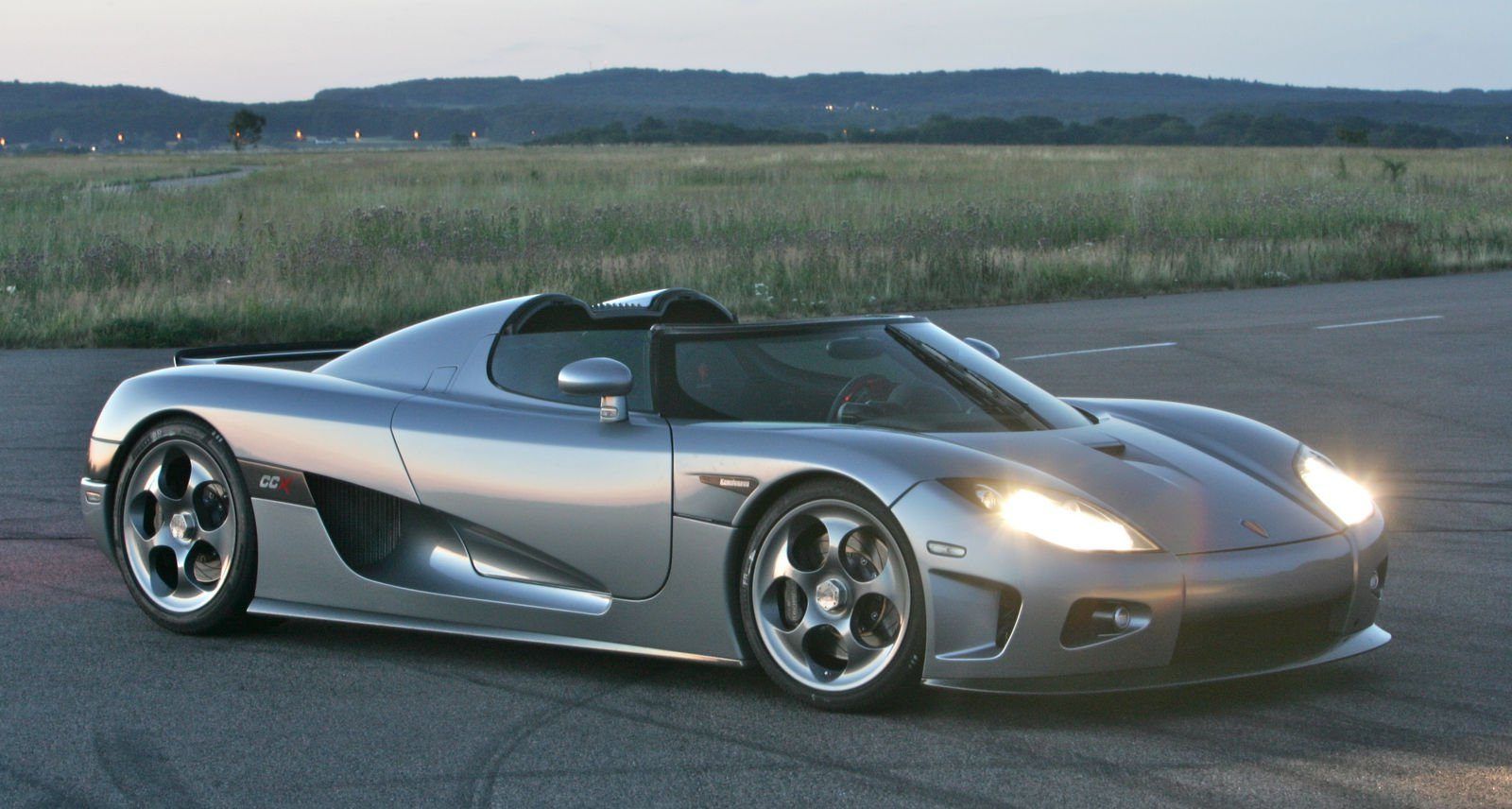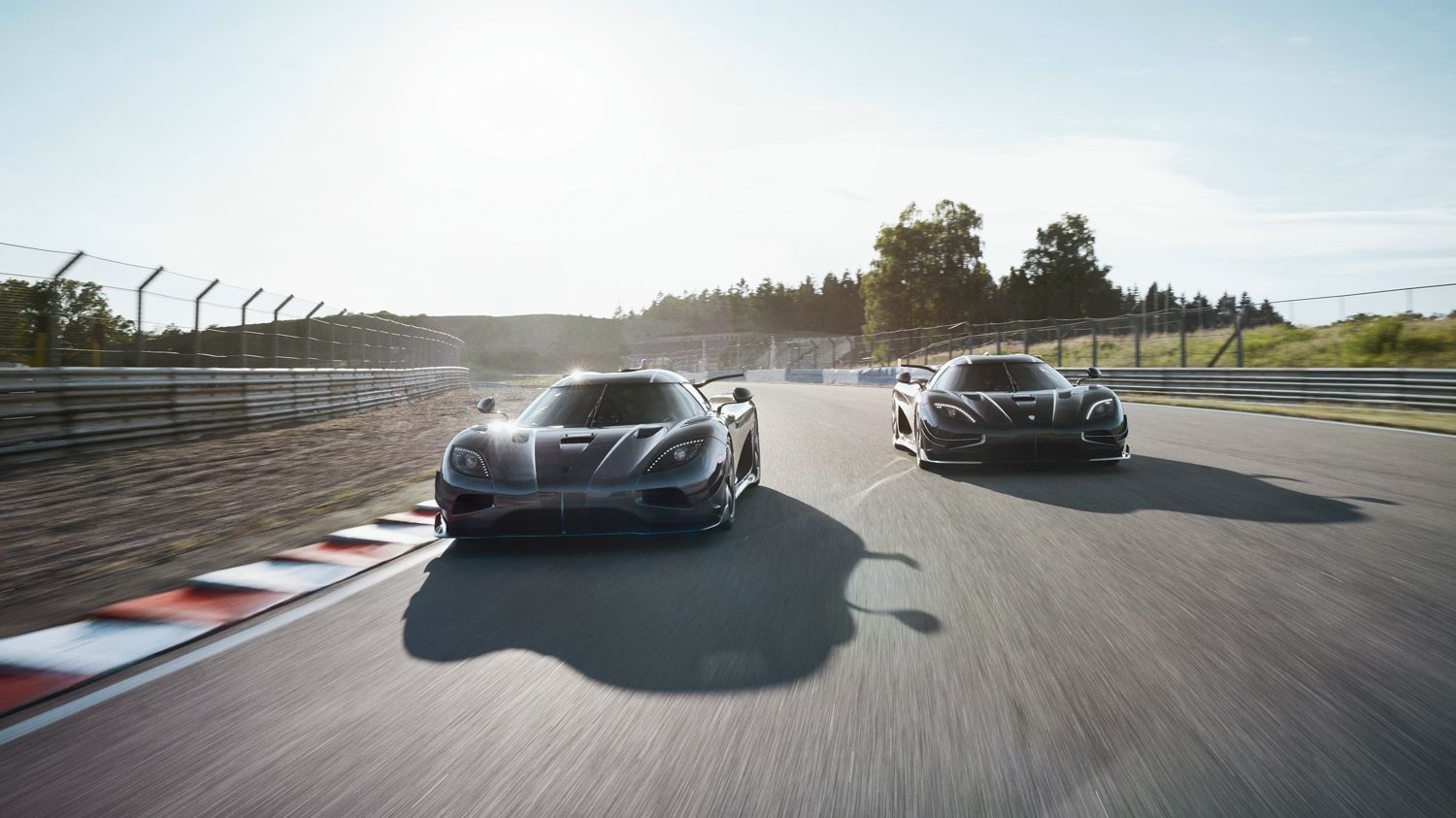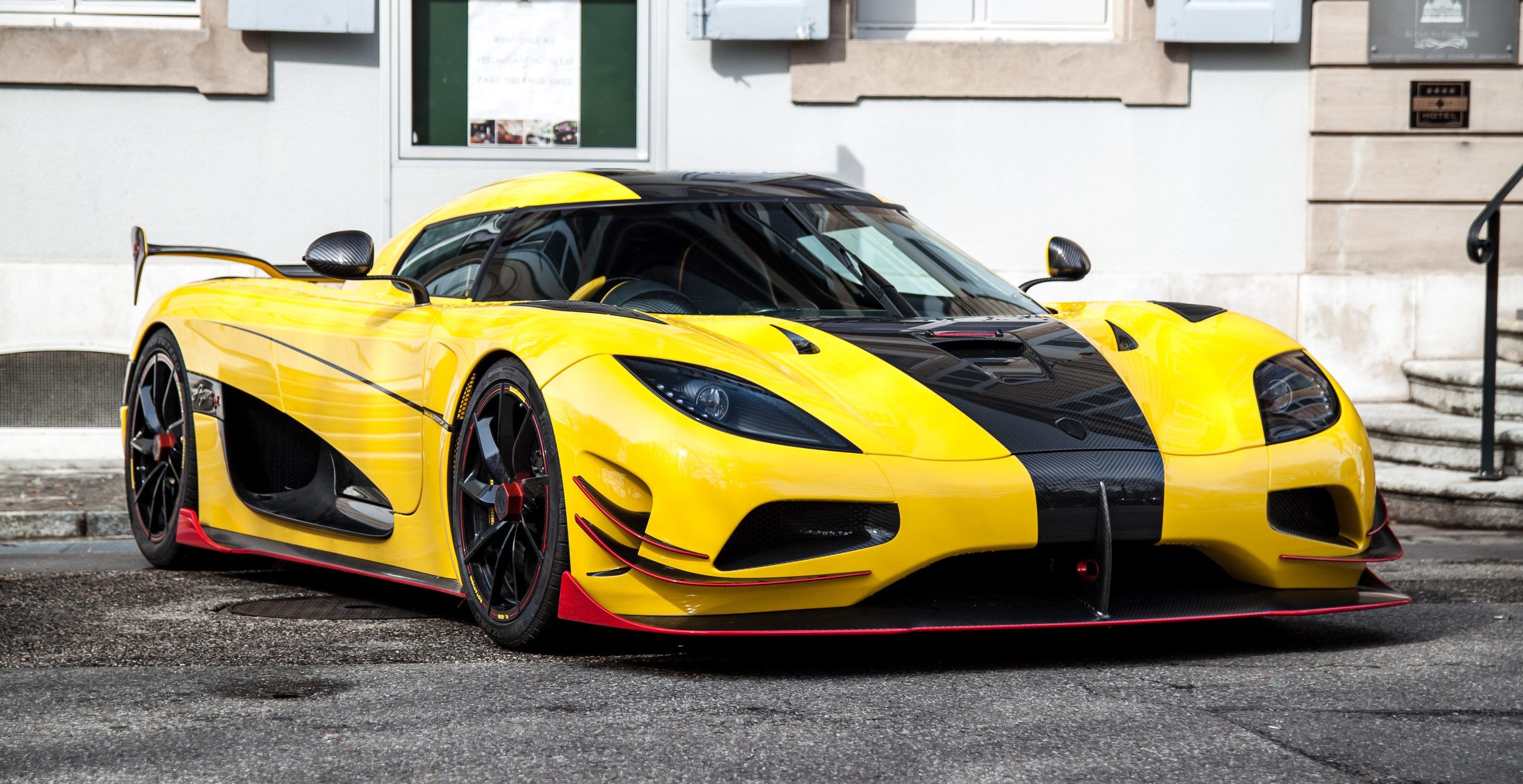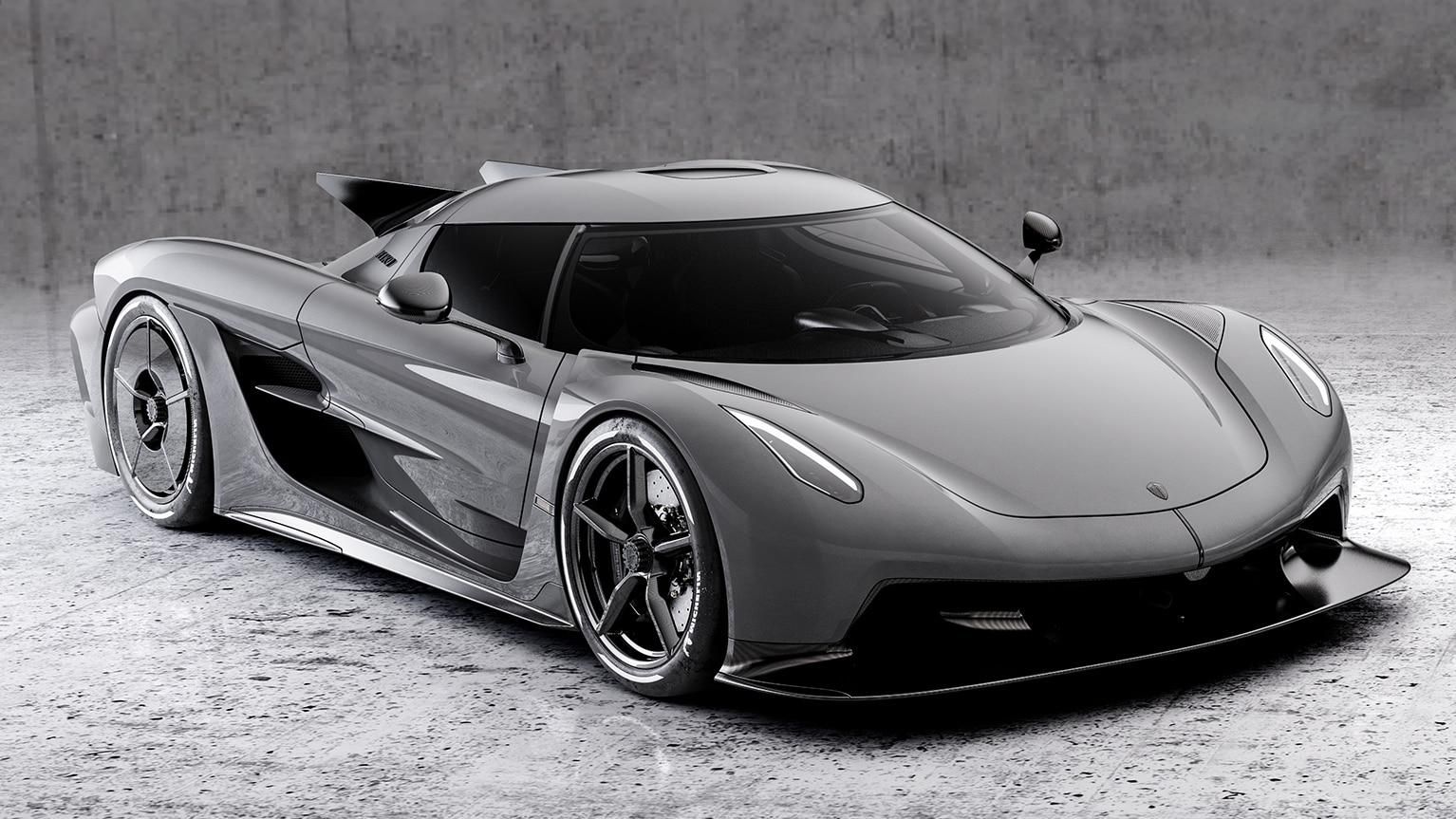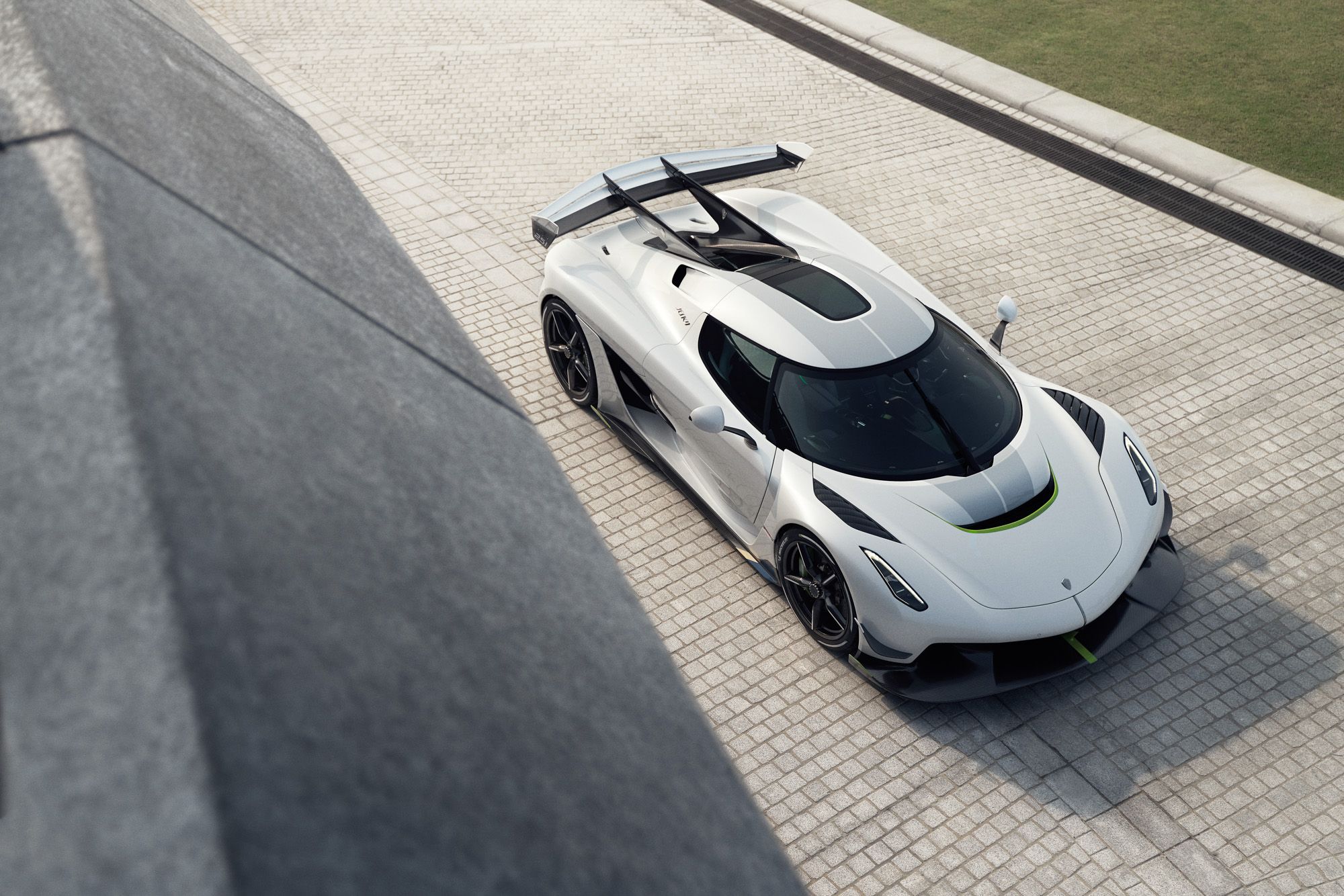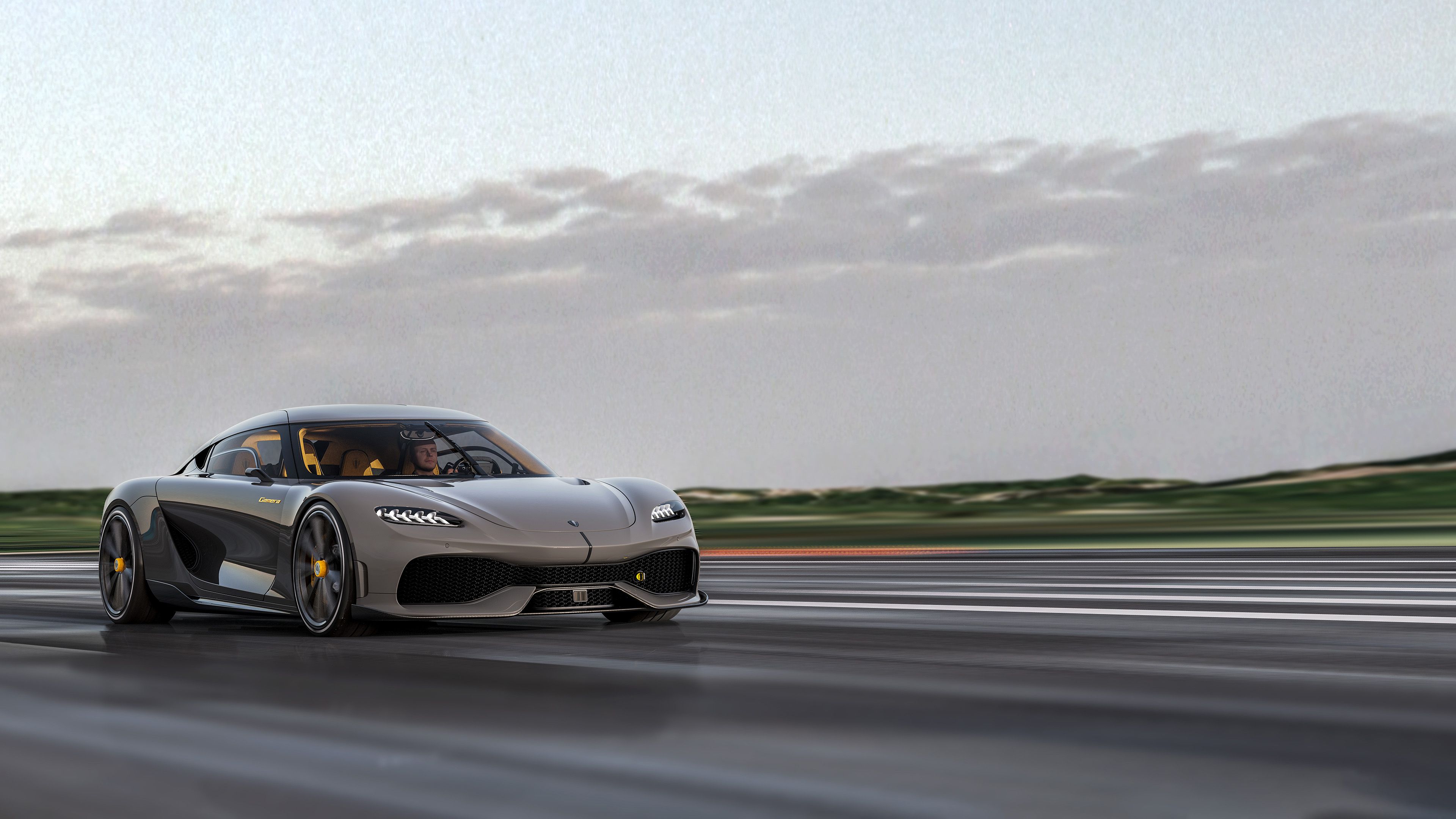Koenigsegg has been at the forefront of the motor industry for over two decades. The Swedish manufacturer has produced some of the most innovative cars that have gone on to shape the way supercars are made today.
Koenigsegg CEO, Christian von Koenigsegg had always had dreams of building his own car, his inspiration first came when he was a child after he watched the Flaklypa Grand Prix, a story about a bicycle maker who built his own racing car.
This movie sparked an idea in Christian that would guide him for the rest of his life. Christian von Koenigsegg launched the "Koenigsegg project" in 1994 with one clear vision in mind, to build the ultimate supercar, and he did. Koenigsegg has built some of the most innovative supercars in the world, which has helped propel them to the top of their industry.
Related: Watch 2,500-HP Of Koenigseggs Drag Race On Swiss Airfield
Humble Beginnings
The CC
Koenigsegg first debuted its concept vehicle the Koenigsegg CC in 1996, two years after the company was first launched. The CC was designed with one goal, to go faster than the McLaren F1. The CC laid the foundation for the first production-ready Koenigsegg, the CC8S.
The CC8S
The Koenigsegg CC8S was the production version of the CC, it launched in 2002, only eight years after Koenigsegg Automotive was created. The CC8S had a 4.7-liter V8 engine that could produce up to 655 horsepower and 550 lb-ft of torque. The powerful 4.7-liter V8 engine held the world record for the most powerful production engine.
Up In Flames
The historic Koenigsegg factory Margretetorp caught fire in 2003, just two weeks before the Geneva motor show. The tragedy forced the company to move to a nearby air force base, which would go on to become the company's new home.
It had been less than 10 years since the company was launched before it needed to undergo a rebuild.
A New Dawn
The tragedy did not discourage Christian von Koenigsegg, if anything it seemed to spur him on even more. Koenigsegg's new home inspired Christian von Koenigsegg to create the infamous ghost badge.
Koenigsegg CCR
The Koenigsegg CCR replaced the CC8S in 2004. The CCR continued to set the benchmark for supercars, becoming the second Koenigsegg car to hold a Guinness World Record.
The CCR became the world's most powerful production car in 2004, replacing its predecessor, the CC8S. The CCR was a trailblazer, it went on to surpass the Mclaren F1 as the fastest car in the world.
The CCR had a top speed of 242 mph and could go from 0-62 mph in 3.2 seconds.
Koenigsegg CCX
The bigger and better version of the CCR. The Koenigsegg CCX was the first Koenigsegg to be sold in the U.S. The CCX maintained Koenigsegg's tight grip at the top of the supercar hierarchy and went on to set a time record at the Top Gear Test Track that it held for 7 years.
A Decade of Dominance
At the beginning of the 2010s, Koenigsegg had cemented itself as a powerhouse in the motor industry. It led the industry in innovation, design, and performance.
Koenigsegg Agera
The Agera was the beginning of what would be a decade of dominance for the Swedish manufacturer. Their battle with Bugatti went on to shape this decade, with the two manufacturers setting incredible benchmarks that would redefine the motor industry.
Agera means "to take action" in Swedish, and that is exactly what it went on to do. The Agera has a top speed of 245 mph and goes from 0-62 mph in 3 seconds.
Agera RS
Towards the end of the decade, the Agera RS reigned supreme as the world's fastest car before being dethroned by the Bugatti Chiron. The Agera RS has a top speed of 277.9 mph and can go from 0-62 mph in 2.9 seconds.
The RS also has a powerful 5.0-liter V8 engine that produces 1176 hp in standard form but can go up to much as 1300 hp with its 1MW upgrade.
The Next Generation
Koenigsegg recently released fresh images of their new mega cars, the Koenigsegg Gemera and the Jesko.
The Swedish manufacturer has once again set its sights on reclaiming its place at the top of the motor industry. The imminent release of the Jesko absolut will see the car manufacturer challenge the record set by the Bugatti Chiron.
Koenigsegg Jesko Absolut
The Koenigsegg Jesko is the fastest Koenigsegg ever made. The Jesko is expected to challenge the Bugatti Chiron's 304.774 mph world record. The Jesko absolut can theoretically reach speeds of up to 330 mph, which will see it comfortably surpass the Chiron.
The Koenigsegg Jesko
The Jesko is named after Jesko von Koenigsegg, the father of company founder and CEO Christian von Koenigsegg. The Jesko is the natural successor to the Agera RS after the RS was discontinued. The Jesko is more track-oriented while the Absolut is more high-speed orientated. It houses the same 5.0-liter V8 twin-turbo engine as the Absolut, which produces up to 1600 hp.
The Koenigsegg Gemera
The Koenigsegg Gemera was designed to be the world's first mega-GT. A Koenigsegg that is more suited to driving cross-country, as opposed to driving around a track. The Gemera is Koenigsegg's first 4-seat hypercar.
The 4-seater Gemera puts most two-seater supercars to shame. The Gemera produces up to 1700 hp and can reach speeds of up to 240 mph. Gemera is a combination of two Swedish words "ge" (give) and "mera" (more), the hybrid mega-GT certainly lives up to its name.

